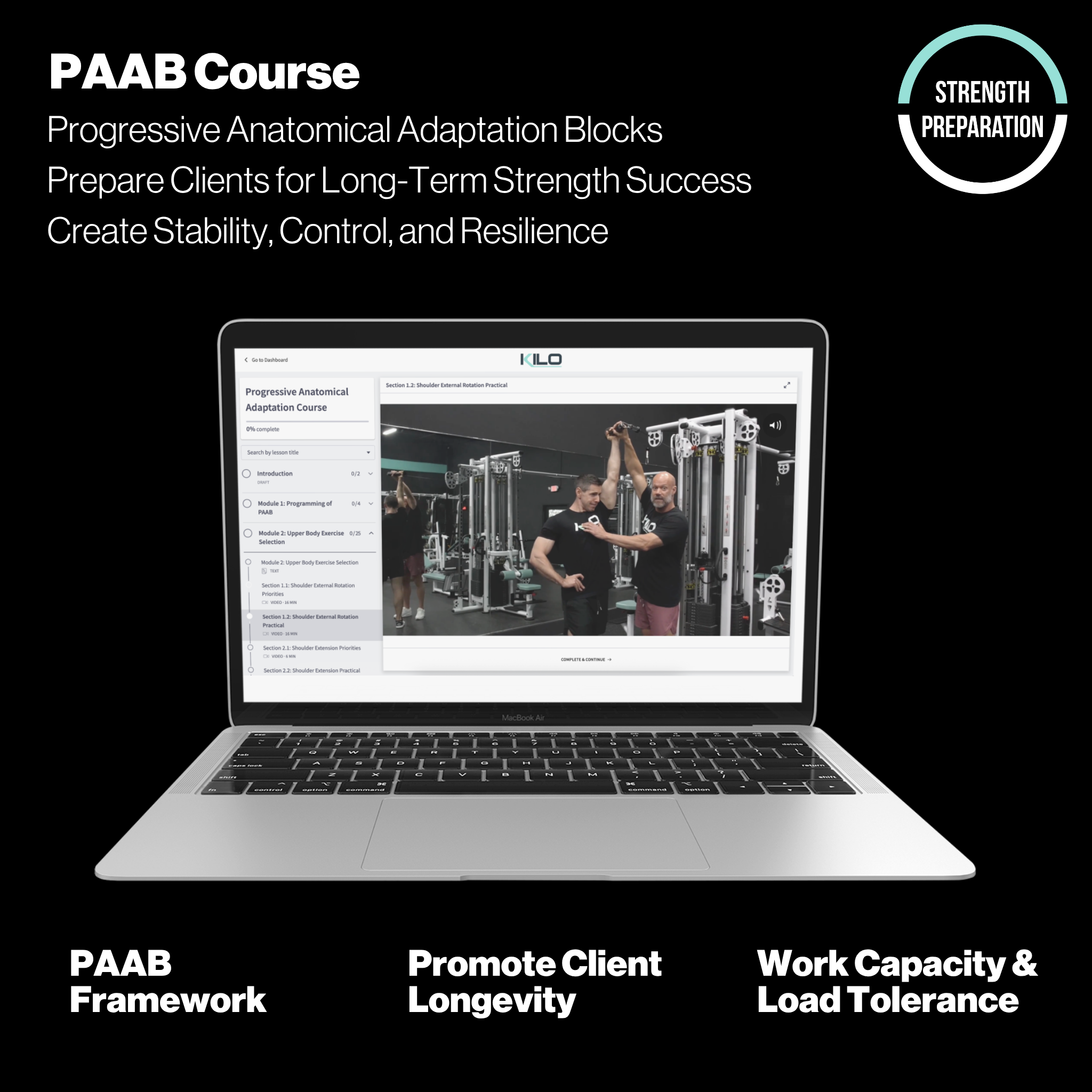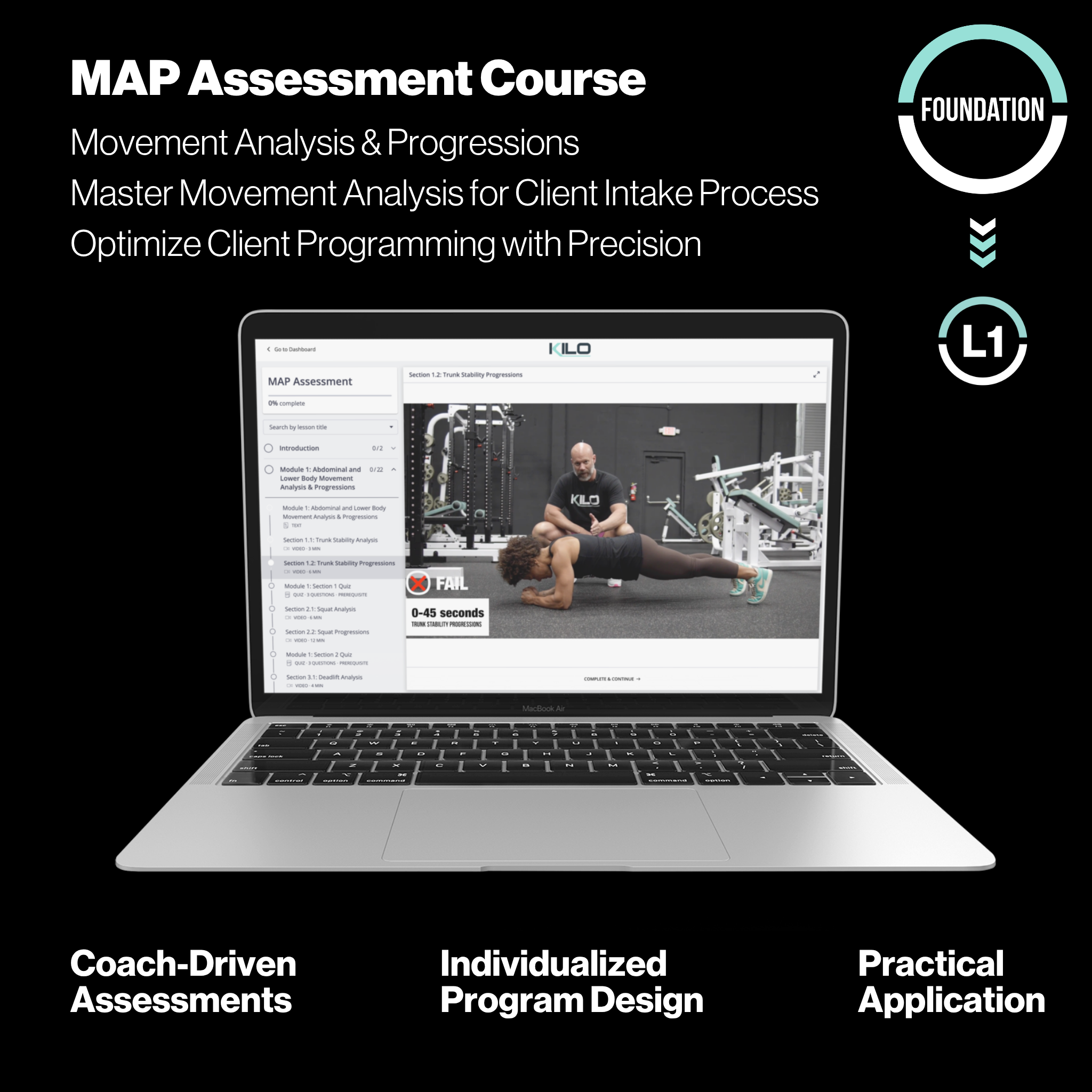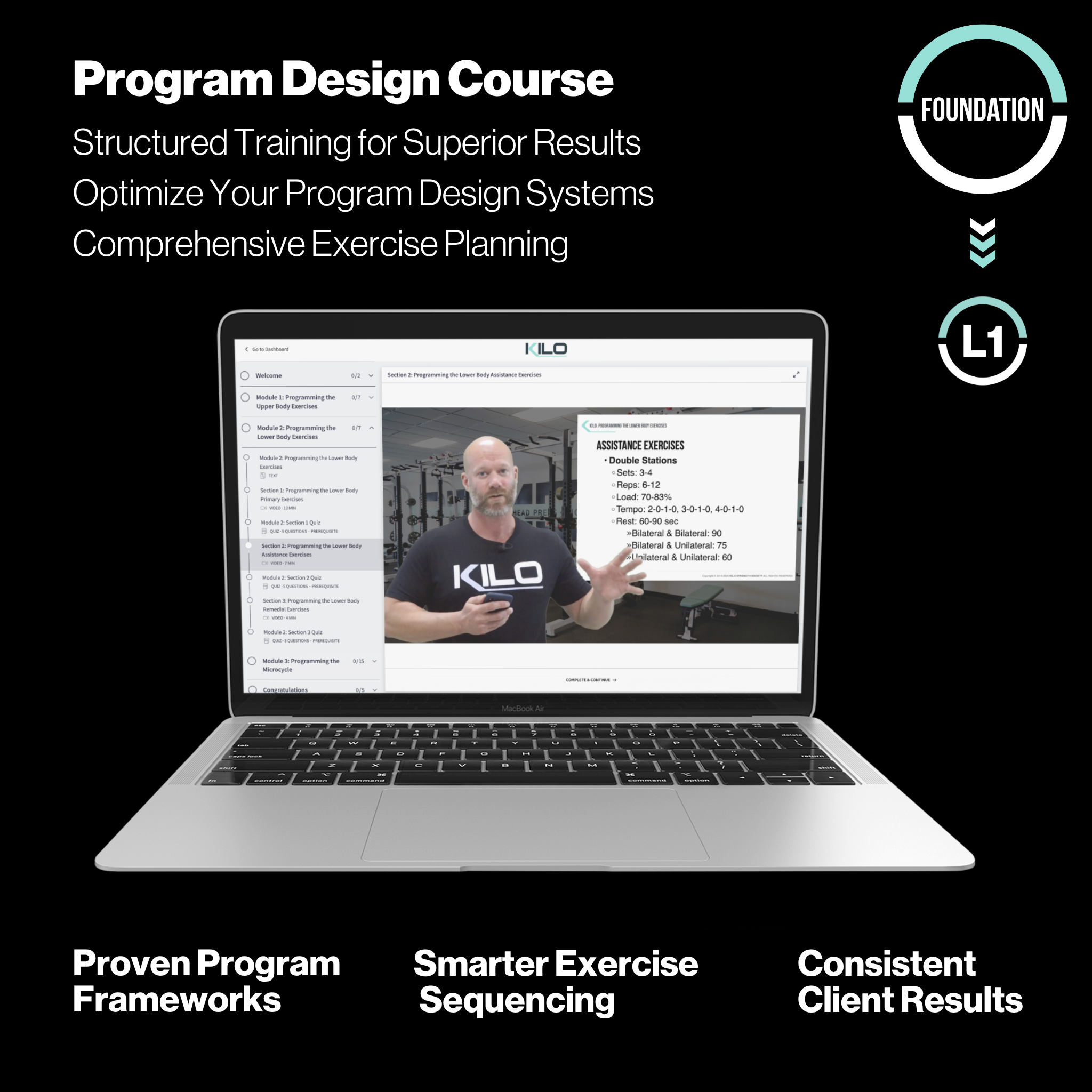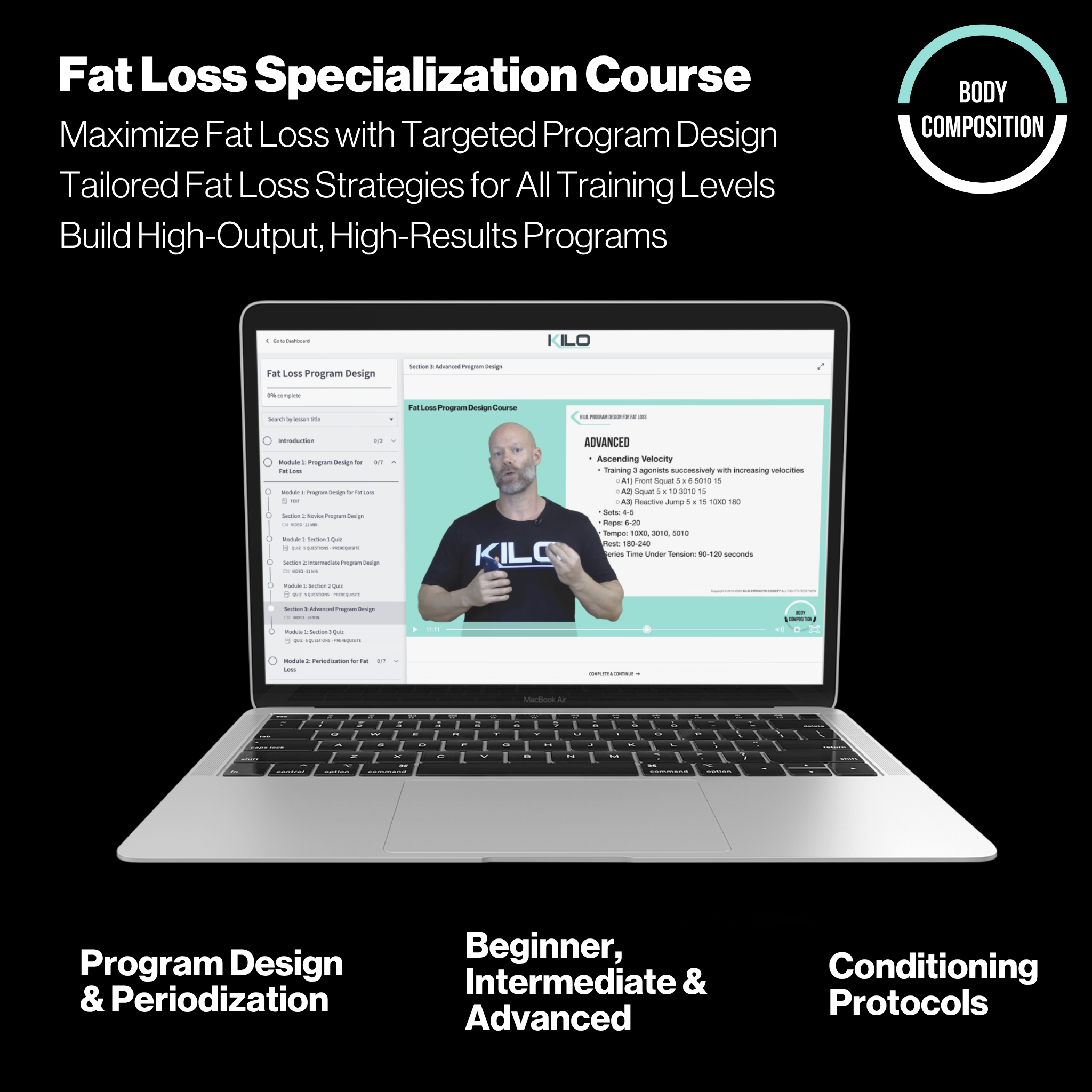When most lifters think about building strength, they focus on the big lifts: squats, presses, and pulls. While these movements are essential, there's an often-overlooked factor that can make or break your ability to express your true strength potential: grip strength.
At KILO, we believe that a strong grip is not just an added benefit, it’s a foundational tool for success in strength training. Whether you’re hoisting heavy weights off the floor, controlling a bar overhead, or bracing against resistance, your grip is your first line of contact. Without a solid grip, your capacity to move heavier loads safely and efficiently is compromised.
In this post, we’ll explore why grip training matters, how to approach it systematically, and walk through our 9-session rotation that hits every major function of the forearms.
You'll walk away with a clear, actionable plan to help you or your athletes unlock serious grip power.
Why Grip Strength Is Foundational
Grip strength is often treated as a secondary concern, something that “just improves over time.” While there’s some truth to that, relying on indirect improvements is a mistake, especially if you're chasing elite performance.
Here’s what strong grip training gives you:
-
Heavier lifts: A strong grip allows you to hang onto more weight for longer with better control.
-
Reduced energy leaks: When your hands are weak, other parts of your body pick up the slack, leading to poor mechanics and injury risk.
-
More muscular development: Focused grip work floods the forearms with strength and hypertrophy where it matters.
-
Improved athletic function: From wrestling to rock climbing to combat sports, grip endurance and crushing strength are game changers.
The KILO Approach: Frequent, Focused, Functional
Our grip training philosophy at KILO is built around frequent exposure to a wide variety of grip stimuli. Rather than overloading the grip once a week, we train the forearms 3 times per week in short, 15-minute sessions that are deliberately structured to target every key muscle and movement pattern.
We cycle through 9 distinct grip sessions, each targeting specific functions like finger flexion, wrist rotation, or isometric contraction. Each 3-week mesocycle includes all 9 sessions, rotated logically across training days.
Below is a breakdown of the 9-session system.
Grip Session Rotation (3x/Week)
Session 1: Finger Extension & Flexion
| Exercise | Sets x Reps | Tempo | Rest |
|---|---|---|---|
| Band Finger Extension | 3-5 × 12-20 | 2-0-1-0 | 30-60 sec |
| Heavy Grippers | 3-5 × 12-20 | 2-0-1-0 |
This foundational session builds dynamic strength across both sides of the fingers.
Session 2: Wrist Extension & Flexion
| Exercise | Sets x Reps | Tempo | Rest |
|---|---|---|---|
| Dumbbell Wrist Extension | 3-5 × 12-20 | 2-0-1-0 | 30-60 sec |
| Dumbbell Wrist Curl | 3-5 × 12-20 | 2-0-1-0 |
You’ll notice improved bar control in everything from curls to presses.
Session 3: Supination & Pronation
| Exercise | Sets x Reps | Tempo | Rest |
|---|---|---|---|
| Thor’s Hammer Supination | 3-5 × 12-20 | 2-0-1-0 | 30-60 sec |
| Thor’s Hammer Pronation | 3-5 × 12-20 | 2-0-1-0 |
Rotational control of the forearms is crucial for joint integrity and sport carryover.
Session 4: Ulnar & Radial Deviation
| Exercise | Sets x Reps | Tempo | Rest |
|---|---|---|---|
| Thor’s Hammer Ulnar Flexion | 3-5 × 12-20 | 2-0-1-0 | 30-60 sec |
| Thor’s Hammer Radial Flexion | 3-5 × 12-20 | 2-0-1-0 |
Targets the deeper muscles in the wrist, which are often neglected in standard training.
Session 5: Isometric Finger Work
| Exercise | Sets x Reps | Tempo | Rest |
|---|---|---|---|
| Band Finger Extension | 3-5 × 6-10 | 1-0-1-6 | 30-60 sec |
| Pinch Block | 3-5 × 6-10 | 1-0-1-6 |
Isometric contractions develop both grip endurance and neural drive.
Session 6: Volume-Based Forearm Builder
| Exercise | Sets x Reps | Tempo | Rest |
|---|---|---|---|
| Wrist Roller (1 rep = 1 up & down) | 3-5 × 2-3 | 1-0-1-0 | 120-180 sec |
A high-volume finisher that lights your forearms on fire, in the best way.
Session 7: Cable-Based Rotation
| Exercise | Sets x Reps | Tempo | Rest |
|---|---|---|---|
| Mid-Pulley Rope Supination | 3-5 × 12-20 | 2-0-1-0 | 30-60 sec |
| Mid-Pulley Rope Pronation | 3-5 × 12-20 | 2-0-1-0 |
Cables allow for constant tension and precision at new strength curve points.
Session 8: Size-Contrast Isometric Pinch
| Exercise | Sets x Reps | Tempo | Rest |
|---|---|---|---|
| Pinch Cylinder | 3-5 × 6-10 | 1-0-1-6 | 30-60 sec |
| Pinch Plate | 3-5 × 6-10 | 1-0-1-6 |
The alternating surface area challenges your neuromuscular coordination.
Session 9: High-Volume Deviation Work
| Exercise | Sets x Reps | Tempo | Rest |
|---|---|---|---|
| Twist Yo’ Wrist Adduction | 3-5 × 2 | 1-0-1-0 | 30-60 sec |
| Twist Yo’ Wrist Abduction | 3-5 × 2 | 1-0-1-0 |
Using this tool promotes training density in a rarely targeted movement plane.
Progressive Overload with a Purpose
We don’t just rotate through these sessions aimlessly. Each mesocycle follows the Accumulation to Intensification model to drive adaptive change.
In Accumulation Phases:
-
Reps are higher (12-20)
-
Focus is on time under tension and volume
-
Ideal for building strength endurance
In Intensification Phases:
-
Reps drop to 8-12 (or 3-5 for isometric holds)
-
Emphasis shifts toward max force and grip density
-
Wrist roller drops to 1 rep per set; Twist Yo’ Wrist = 1 rope length
This keeps adaptation steady and progressive. Over time, improvements in grip strength spill over into all your main lifts.
Final Thoughts: A Strong Grip is a Strong Lifter
In the KILO system, nothing is left to chance, and grip is no exception. We take this foundational capacity seriously because we’ve seen the results: heavier lifts, better control, and stronger athletes.
If you’ve been neglecting your forearms and grip, now is the time to change. Start rotating through these 15-minute grip sessions three times a week, and stick to the cycle for at least 3 weeks. Then shift your focus, change the rep scheme, and intensify.
Small investments yield massive returns when applied consistently.
Don’t let your grip be the weakest link. Train it the right way, and you’ll feel the difference everywhere.








Share:
The Fitness-Fatigue Paradigm: The Engine Behind Performance
Session Loading: How KILO Structures In-Session Progression for Maximum Gains